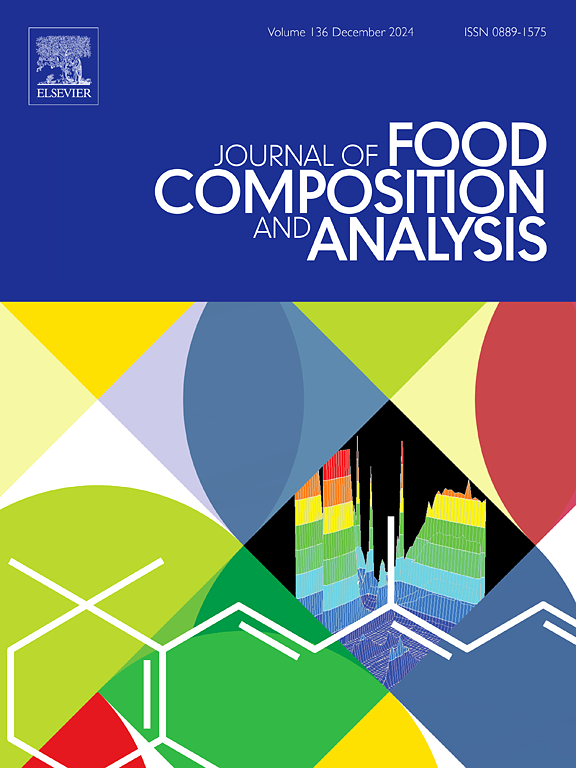Compositional and nutritional insights into Mediterranean sea cucumbers: A study on Holothuria polii and Holothuria tubulosa from Southern Italy
IF 4
2区 农林科学
Q2 CHEMISTRY, APPLIED
引用次数: 0
Abstract
Sea cucumbers are marine invertebrates with important ecological roles and a food delicacy with high market value. This study investigated the compositional profile and nutritional features of two Mediterranean sea cucumbers, Holothuria polii and Holothuria tubulosa, harvested in Adriatic Sea and Ionian Sea, Southern Italy. The macronutrients were determined by AOAC methods. The minerals were determined by Inductively Coupled Plasma Optical Emission Spectrometry (ICP-OES) and fatty acids by Gas Chromatography-Mass Spectrometry/Flame Ionization Detector (GC-MS/FID). Total mercury content was analyzed by Thermal Decomposition–Amalgamation–Atomic Absorption Spectrophotometry. Results showed that holothurians from the two basins are good protein (average 38–60 % dry mass) and mineral (32–37 % dry mass) sources, have a very low lipid content (1–3.7 % dry mass) and negligible mercury levels (0.016–0.038 mg kg−1 dry mass). H. polii showed a higher nutrient density, especially regarding minerals, with calcium, sodium and magnesium as the major ones. The analysis of fatty acid profiles enabled the identification of specific markers, reflecting habitat characteristics, seasonality, and dietary attitudes of holothurians. High percentages of arachidonic acid (47–65 % of total polyunsaturated fatty acids) and remarkable levels of branched-chain (6–9 % of total fatty acids) and odd-chain saturated fatty acids (1.7–3.8 % of total fatty acids), trophic markers of benthic food webs and sediment microbiota, were characterizing traits. Principal Component Analysis showed a neat discrimination of holothurians based on the species and harvesting site. Results underscore the nutritional properties of Mediterranean holothurian as part of a balanced diet, highlighting their potentialities as sources of molecules of nutritional and nutraceutical interest.
求助全文
约1分钟内获得全文
求助全文
来源期刊

Journal of Food Composition and Analysis
工程技术-食品科技
CiteScore
6.20
自引率
11.60%
发文量
601
审稿时长
53 days
期刊介绍:
The Journal of Food Composition and Analysis publishes manuscripts on scientific aspects of data on the chemical composition of human foods, with particular emphasis on actual data on composition of foods; analytical methods; studies on the manipulation, storage, distribution and use of food composition data; and studies on the statistics, use and distribution of such data and data systems. The Journal''s basis is nutrient composition, with increasing emphasis on bioactive non-nutrient and anti-nutrient components. Papers must provide sufficient description of the food samples, analytical methods, quality control procedures and statistical treatments of the data to permit the end users of the food composition data to evaluate the appropriateness of such data in their projects.
The Journal does not publish papers on: microbiological compounds; sensory quality; aromatics/volatiles in food and wine; essential oils; organoleptic characteristics of food; physical properties; or clinical papers and pharmacology-related papers.
 求助内容:
求助内容: 应助结果提醒方式:
应助结果提醒方式:


